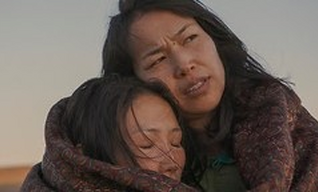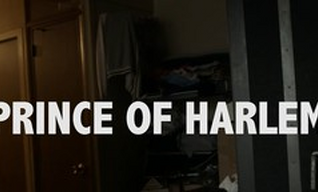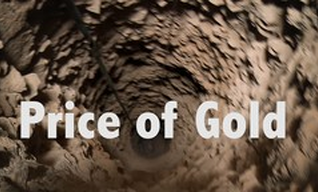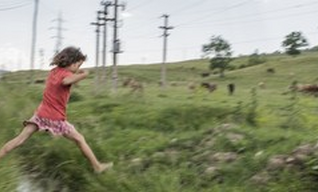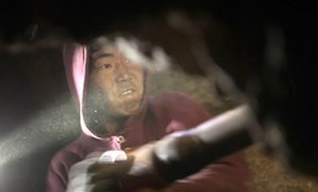
Sven Zellner
-
Noch keine BeiträgeHier wird noch geschrieben ... bitte schaue bald nochmal vorbei

Sven Zellner
-
film
-
fotografie
-
mongolei
-
reise
-
reportage
-
rumänien
-
dokumentarfilm
-
fotograf
-
fotojournalist
-
grönland
-
arte-dokumentarfilmpreis
Sven Zellner, Fotograf, Diplom-Kameramann (Hochschule für Fernsehen und Film München) und Filmemacher. Seine Fotoreportagen werden von der Agentur Fo¬cus in Hamburg vertrieben. Er wurde zweimal mit einem zweiten Preis beim »BBC Wildlife Photographer of the Year« ausgezeichnet und veröffentlichte mit 22 Jahren sein ersten Fotobildband. Seine Fotos erschienen in Magazinen wie GEO, Terra Mater, Leica Fotografie International, DAS MAGAZIN, GEO international, VIEW, Progresso Fotografico, GEOlino, ZEIT Leo, FAS, SZ, Spiegel Online, LensCulture, delayed gratification.
Sein Fotoessay »Ninjas« über illegale Goldgräber in der Mongolei wurde 2011 auf dem »Visa pour l’image – Perpignan« präsentiert und in Einzelausstellungen auf dem Filmfest München 2012 und in Ulaanbaatar 2013. Die Ausstellung »Mongolen Disko« wurde in der LFI Galerie in Hamburg, im Radialsystem V in Berlin und im German House am UN Plaza in New York gezeigt.
2015 erhielt Sven Zellner eine Lobende Erwähnung der Manuel Rivera-Ortiz Foundation for Documentary Photography and Film für sein Langzeitprojekt »Eine Kindheit in Rumänien«. Für sein Projekt »Greenland’s Future Generation« bekam er 2013 das VG-Bild-Kunst-Stipendium der Stiftung Kulturwerk. Die Reportage wurde unter dem Titel »Zukunft auf Eis« in GEO 02/2016 veröffentlicht.
Der Dokumentarfilm »Preis des Goldes« über den Goldrausch in der Mongolei ist sein Kinodebutfilm. Regisseur und Kameramann Sven Zellner versteht die mongolische Sprache und er verbrachte vier Jahre damit, um in der Mongolei die Protagonisten für seinen Film zu finden und von ihnen akzeptiert zu werden. Der Film hatte Weltpremiere im Mai 2012 auf dem HotDocs Film Festival in Toronto und Deutschlandpremiere auf dem Filmfest München 2012 in der Reihe »Neues Deutsches Kino«. PREIS DES GOLDES gewann den ARTE-Dokumentarfilmpreis 2012 der Duisburger Filmwoche.
Als »Director of Photography« realisierte er Kinofilme wie »Die Hummel« von Sebastian Stern, ausgezeichnet mit dem Bayerischen Filmpreis 2010 und »Schau mich nicht so an« von Uisenma Borchu ausgezeichnet mit dem FIPRESCI Preis auf dem Filmfest München 2015, dem Bayerischen Filmpreis 2015, dem Grand Prix der New Talent Competition des Taipei Film Festivals 2016 und dem Most Promising Talent Award in Osaka.
Villa Aurora Stipendium 2019, Produzent und Director of Photography von SCHWARZE MILCH (2020), Regie: Uisenma Borchu - Berlinale Panorama 2020. Gefördert durch: FilmFernsehFonds Bayern, BKM - Die Beauftragte der Bundesregierung für Kultur und Medien, Kuratorium junger deutscher Film, Grenzgänger Rechercheförderung - Robert Bosch Stiftung - Literarisches Colloquium Berlin.
Sven Zellner lehrt als Dozent an der Hochschule für Fernsehen und Film München und an der TH Deggendorf.
2015 Lobende Erwähnung für »Eine Kindheit in Rumänien« der Manuel Rivera-Ortiz Foundation for Documentary Photography and Film
2015 »Mongolian Disco« Ausstellung German House UN Plaza New York
2014 »Mongolian Disco« Ausstellung RADIALSYSTEM V Berlin
2014 »Mongolian Disco« Ausstellung LFI Gallery Hamburg
2013-2014 »NINJAS« Ausstellung Ulaanbaatar, Darkhan und Erdenet, Mongolei
2013 VG BILD-KUNST-Stipendium der Stiftung Kulturwerk 2013
für »GREENLAND'S FUTURE GENERATION« · »DIE JUGEND GRÖNLANDS«
2013 2, Preis BR / Telepool Dokumentarfilmwettbewerb, Filmfest München
2012 ARTE-Dokumentarfilmpreis für »Preis des Goldes« Duisburger Filmwoche.
2012 HFF-Medienkunst Stipendium der Kirch-Stiftung für Ausstellung und Katalog »NINJAS«
2012 PHOTOCRATI FUND Honorable Mentions for »nomadic children«
2009 3. Preis BR / Telepool Dokumentarfilmwettbewerb, Filmfest München.
2000 2. Preis BBC Wildlife Photographer of the Year 2000
1995 2. Preis BBC Young Wildlife Photographer of the Year
Auftraggeber
Agentur Focus , Bayerischer Rundfunk , Brigitte , DAS MAGAZIN , Die Zeit , Emerge , Focus , Frankfurter Allgemeine Sonntagszeitung , GEO , GEO international , GEOlino , LFI Leica Fotografie International , NATIONAL GEOGRAPHIC MONGOLIA , Terra Mater , ZEIT Leo
Weitere Profile
Agentur Focus Portfolio , Facebook , PRICE OF GOLD documentary , Photographic Museum of Humanity , Selected Views , Twitter , Webseite
Fehler!
Leider konnte der Artikel nicht gefunden werden.
We can't find the internet
Attempting to reconnect
Something went wrong!
Hang in there while we get back on track

